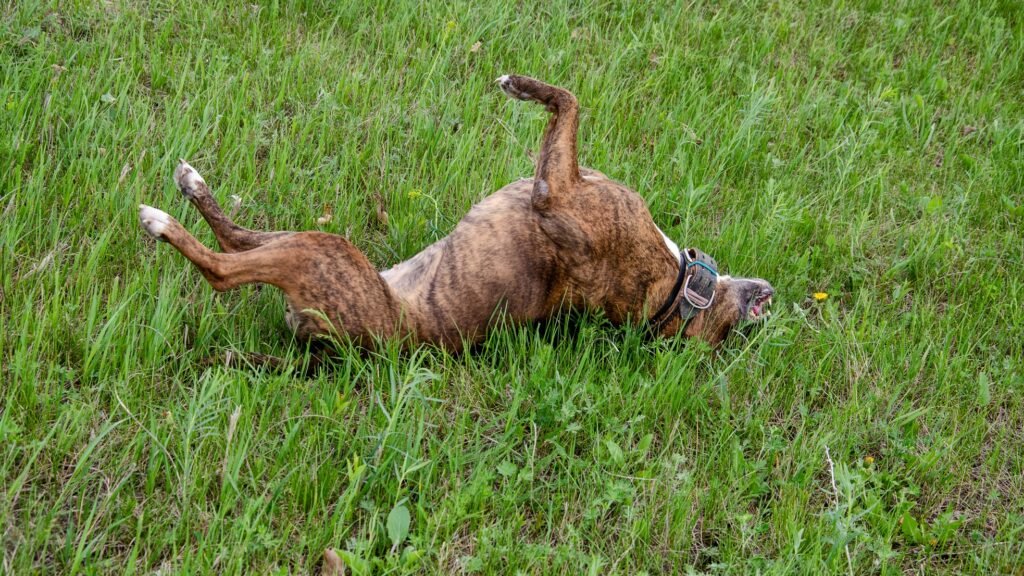Dogs have a special way of keeping us entertained and intrigued by their antics. One behavior that often leaves dog owners amused and curious is when their furry friend lies on their back and wiggles. While it might look like a random act of joy, this behavior is often a way for your dog to communicate or address a specific need. Let’s explore seven surprising reasons behind this quirky habit.
1. Scratching an Itch

When dogs lie on their backs and wiggle, it’s often to scratch an itch in hard-to-reach areas. Just like humans find relief in scratching an irritating spot, dogs do the same—using the ground as their personal scratching post. This is especially common in dogs with allergies, dry skin, or even a pesky insect bite. If you notice this behavior happening frequently, check their fur for fleas or skin irritations that might need attention. Regular grooming and flea prevention treatments can help reduce this cause.
2. Marking Their Scent

Dogs have a keen sense of smell and rely on it to navigate their world. Rolling and wiggling on the ground can be their way of marking territory by leaving their scent behind. This behavior is linked to their ancient instincts, where marking an area with their unique smell acted as a signal to other animals. If your dog frequently chooses the same spot to wiggle, it might be their favorite place to claim as their own.
3. Cooling Off

On warm days, lying on their back and wiggling against cool surfaces like grass or tiled floors can help dogs regulate their body temperature. This natural cooling method ensures their body gets relief from the heat. If you see your dog doing this during summer, it might be their clever way of keeping comfortable.
4. Expressing Trust and Comfort

A dog that lies on its back and exposes its belly is showing a deep level of trust. The belly is a vulnerable area for dogs, so this position indicates that they feel safe and secure in their environment. The added wiggling can be a sign of pure joy and contentment. If your dog does this around you, take it as a compliment—they trust you completely.
5. Seeking Attention

Dogs are masters of communication, and sometimes, rolling on their backs and wiggling is their way of saying, “Look at me!” This playful behavior is designed to grab your attention, whether they’re in the mood for some belly rubs or simply want you to join in the fun. Responding positively to this behavior strengthens your bond and gives your dog the attention they crave.
6. Submissive Behavior

In interactions with other dogs, rolling onto their back can be a sign of submission. By exposing their belly, they’re showing they pose no threat and are willing to defer to the other dog’s dominance. This behavior, paired with wiggling, often helps diffuse tension or invite playfulness.
7. Pure Joy

Sometimes, the simplest explanation is the correct one—dogs wiggle on their backs because it’s fun! The sheer delight of feeling the ground against their back or simply letting loose can be a sign of happiness. This carefree behavior is a reminder of how dogs find joy in the little things. Understanding your dog’s body language and behaviors, like lying on their back and wiggling, helps you build a stronger bond. Whether it’s a need for attention, cooling off, or just expressing joy, these moments offer insight into your dog’s world and add to the countless reasons we love them.

Andrew Alpin from India is the Brand Manager of Doggo digest. Andrew is an experienced content specialist and social media manager with a passion for writing. His forte includes health and wellness, Travel, Animals, and Nature. A nature nomad, Andrew is obsessed with mountains and loves high-altitude trekking. He has been on several Himalayan treks in India including the Everest Base Camp in Nepal.






